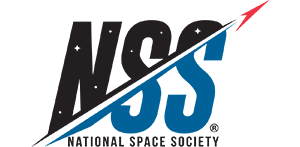|
Curator: Al Globus If you find any errors on this page contact Al Globus. |
 |
This site was hosted by the NASA Ames Research Center from 1994-2018 and is now hosted by:

Ground-Based Observation of Near-Earth Asteroids
Michael J. Gaffey
An increased ground-based observation program is an essential component of any serious attempt to assess the resource potential of the near-Earth asteroids. A vigorous search and characterization program could lead to the discovery and description of about 400 to 500 near-Earth asteroids in the next 20 years. This program, in conjunction with meteorite studies, would provide the data base to ensure that the results of a small number of asteroid-rendezvous and sample- return missions could be extrapolated with confidence into a "geological base map" of the Aten, Apollo, and Amor* asteroids. Ground-based spectral studies of nearly 30 members of the Aten/Apolio/Amor population provide good evidence that this class includes bodies composed of silicates, metal-silicates, and carbonaceous assemblages similar to those found in meteorites. It is probable that the full range of known meteoritic materials (if not an even greater diversity) is represented in the near-Earth population. These include water- and carbon-bearing C1 and C2 types and metal-silicate bodies that are 5- to 50-percent metal. Among the relatively few known members of this large near-Earth population are objects in orbits that require less (sometimes much less) energy to reach from low Earth orbit (LEO) than the lunar surface requires. Their orbits are similar to the orbit of the Earth, though many are inclined to it. And, because they are much smaller than the Moon, they have little gravitational attraction. Thus, only a small amount of propulsive energy is required to approach or leave those whose orbits are both close and in nearly the same plane. Using current propulsion technologies, the vast majority of near-Earth asteroids are practically inaccessible. However, if there are as many near-Earth asteroids as we think there are, many more seem likely to be found that are in favorable orbits.
* The Aten asteroids are those whose orbits lie mostly within the Earth's orbit; that is, between Earth and Venus: The Apollo asteroids have orbits that cross the Earth's orbit. The Amor asteroids approach Earth on the Mars side but do not cross the Earth's orbit. These definitions were supplied by Lucy-Ann McFadden, David J. Tholen, and Glenn J. Veeder in their chapter "Physical Properties of Aten, Apollo and Amor Asteroids" in the 1989 book Asteroids II, ed. Richard P. Binzel, Tom Gehrels, and Mildred S. Matthews (Tucson: University of Arizona Press).
Next|
Curator: Al Globus If you find any errors on this page contact Al Globus. |
 |
This site was hosted by the NASA Ames Research Center from 1994-2018 and is now hosted by:
